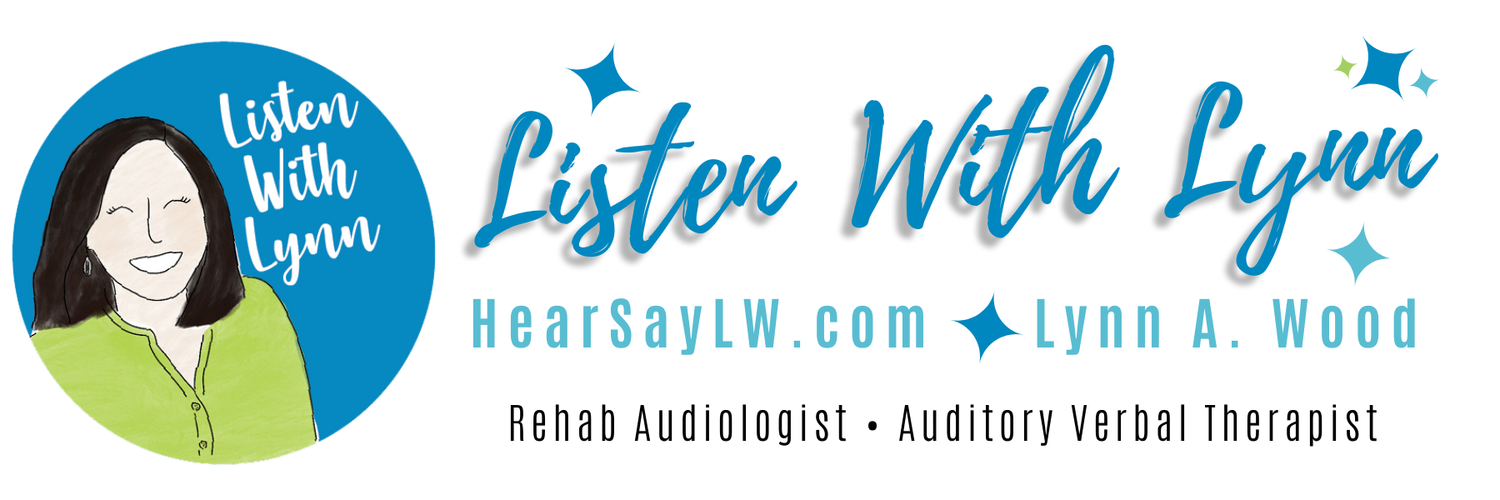Congratulations to the FIVE TEACHERS who won gift certificates for Listen With Lynn resources during the February Indiana Deaf Educators Conference.
Read moreEncourage Flexible Language Learning in Children Who Are Deaf and Harding Of Hearing
When is the best time to buy a trampoline? Spring time.
Last week, I began my therapy sessions by showing the kids a metal spring or coil. I received puzzled looks and questions. Auditory Verbal therapy is conversational so together we talked, listened, and learned, about multiple meanings of the word spring. Little ones heard about the season of spring while older listeners learned additional meanings.
Polar Bear, Silly Directions and Listening and Spoken Language Therapy Plans
What are your LSL therapy plans for this week?
We are reading, listening, and learning along with the animals in the classic story "Polar Bear, Polar Bear What Do You Hear?”, then playing one of my favorites the Silly Directions game?
Silly Directions is an active listening and spoken language game for children of many ages and stages that can be leveled up or down to meet their needs. This game gets kids listening, moving, thinking, and learning.
The directions are designed to be fast, fun, and effective for children who are deaf and hard of hearing and for others who can benefit from practicing listening skills. Kids can expand their receptive language, increase their auditory working memory and processing skills while being engaged and active.
This game can help children learn to:
follow auditory directions
recall and process directions
'chunk' auditory information
remember critical elements in sequential order
use compound and more complex sentences
ask for clarification if they have trouble remembering
expand vocabulary:
Silly Directions can target:
- Similes - Children learn comparisons with similes. Similes use the words like or as to compare things —“Arch your back LIKE a cat.”
- Adjectives - Children hear and build vocabulary while naming the objects. They learn the adjectives that describe the objects — a BOTTLE of ketchup, a MONARCH butterfly, a GARDEN hose…
- Body Parts - Children hear and expand the names of body parts — forehead, waist, chin…
Look inside the Silly Directions Game
DIY - A Listening Box - A Classic Auditory Verbal Resource
A LISTENING BOX is a must-have tool if you guide families of young children who are deaf and hard of hearing. I first made a Listening Box while learning from Doreen Pollack in her video-tapped training lessons as an undergraduate student at the University of Akron Speech and Hearing Clinic.
The auditory premises I learned from Doreen remain true today. Doreen Pollack established the Acoupedic Program in Denver for teaching listening and spoken language to children who were deaf and hard of hearing. This was later named Auditory-Verbal Therapy and today it is referred to as Listening and Spoken Language Therapy.
A Listening Box is a classic Listening and Spoken Language Auditory Verbal activity for beginner listeners. A Listening Box holds sound-making toys, objects, and toy instruments in order to present the sound through hearing first. The sound-making objects are hidden behind the Listening Box’s lid which little kids love. This Learning To Listen activity helps a child develop sound awareness and attach meaning to speech and environmental sounds.
DIY In one of my early intervention auditory verbal sessions with the parents or caregivers we make a DIY Listening Box together either face to face or in a teletherapy session. It gives us time to chat when I can offer important information about sound awareness and listening and spoken language outcomes.
Classic Winter Storybook for Auditory Verbal Intervention
Do you think that Dream Snow By Eric Carle is only a story to read near Christmas? Not me!
Read the story all winter and target learning to listen sounds, early vocabulary of farm animals, weather, clothes, and counting. Dream Snow is a well-loved classic book for listening, spoken language, and literacy that I’ve read for years in auditory verbal sessions with children who are deaf and hard of hearing.
Dream Snow tells the tale of a farmer who falls asleep and dreams of snow falling and covering each of his animals like blankets. Can you guess what the Farmer discovers when he wakes up?
In the book, the snowy blankets are flaps that cover the farm animals. An LSL strategy is letting the child hear a sound or words BEFORE showing them the toy or object. Providing ear contact before eye contact is critical to growing a child's auditory skills.
So, peek at the hidden animal but keep it out of the child’s view. Then open the book’s flap or take off the blanket of snow and talk all about the animals.
Grab toy farm animals and white fabric - I use soft white interfacing material as the snowy blankets and act out the story.
On the last page, there is an opportunity to point out sounds. There is a button near the tree. Point to your ear then press the button. Surprisingly magical music plays. Say, "I hear that!" and talk about the musical sounds.
Use the Listen With Lynn store button below to browse games, activities, and resources created for kids with hearing loss!












